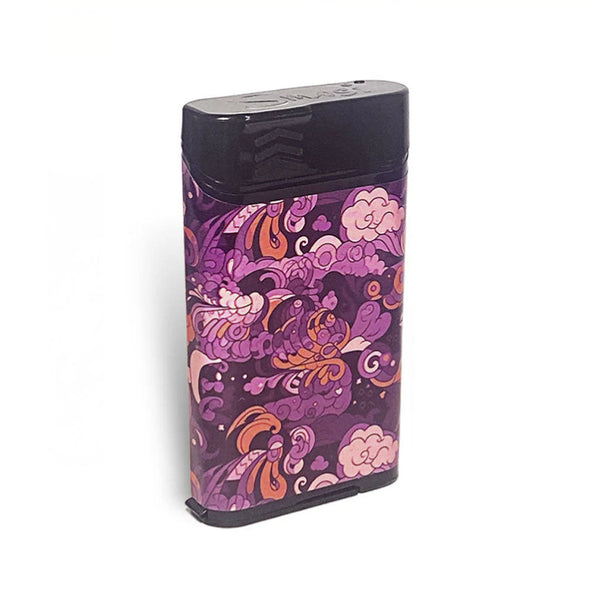Where is Mad Honey from: Exploring its Origins in Nepal and Turkey

Curiosity about unusual and rare substances often leads people to ask, "Where is mad honey from?" This mysterious honey, known for its strange effects and unique origins, intrigues many.
But finding accurate information can feel overwhelming with so much misinformation online.
Mad honey comes from Nepal and Turkey, where bees collect nectar from specific rhododendron flowers. These flowers contain a natural toxin called grayanotoxin that gives the honey its peculiar properties.
This blog will explore how this special honey is made and why it’s valued in these regions. It will also cover its uses, risks, and cultural significance. Stick around to uncover the fascinating story of mad honey!
What is Mad Honey?
Mad honey is a rare type of honey made from specific rhododendron flowers. Its unique composition sets it apart with intriguing effects on those who consume it.
Unique properties of mad honey
This honey, made from rhododendron nectar, contains a natural toxin called grayanotoxin. It interacts with the nervous system when consumed, causing effects like dizziness, euphoria, and even hallucinations.
Bees collect pollen from flowers such as Rhododendron luteum and Rhododendron ponticum to produce this toxic honey. Its psychoactive and intoxicating qualities make it sought after despite its risks.
Grayanotoxin gives mad honey its unique hallucinogenic kick.
Keep reading to uncover how Nepal’s cliffs play a role in this rare creation.
The role of grayanotoxins
Grayanotoxins in mad honey impact the human body by affecting sodium ion channels. These toxins cause prolonged depolarization, which disrupts normal cellular activity. This can lead to a range of symptoms like dizziness, nausea, sweating, vomiting, blurred vision, and weakness.
Consuming even small amounts of poisonous honey containing grayanotoxins may trigger these effects quickly. The concentration of grayanotoxins varies depending on the type and location of rhododendron plants producing nectar for bees.
Rhododendron poisoning from toxic honey is linked to its unique chemical composition. Grayanotoxin content depends on environmental factors such as altitude and climate where these plants grow.
Honey intoxication cases have gained attention due to their hallucinogenic appeal but also carry health risks like "mad honey syndrome." Understanding how grayanotoxins work highlights both the dangers and allure of this intoxicating substance, paving the way to explore Nepal's high-altitude origins next.
Origins of Mad Honey in Nepal
Nepal produces mad honey in isolated, high-altitude regions. Honey hunters scale challenging cliffs to collect this rare and potent treasure.
High-altitude cliffs and honey hunting traditions
High-altitude honey hunting in Nepal is an ancient and dangerous practice. Honey gatherers climb cliffs over 800 feet high, often using flimsy ropes and bamboo ladders. The Ghale Gaun village in the Lamjung district is known for these perilous traditions.
Hunters endure countless bee stings to extract mad honey from steep cliffs.
The process requires immense skill and bravery. Traditional honey harvesting involves scaling vertical rock faces with minimal safety equipment. Locals rely on this risky craft not just for income but also as a cultural tradition passed down through generations.
Harvesting this rare honey isn’t just a job; it’s a test of courage against nature's extremes.
Rhododendron flowers as a nectar source
Rhododendron flowers serve as the primary nectar source for mad honey production in Nepal. These blooms contain grayanotoxin, a plant toxin responsible for the honey's intoxicating and hallucinogenic effects.
Bees collect floral nectar from these plants, transferring the toxic compounds into their honey.
The high concentration of grayanotoxins found in rhododendrons makes their nectar unique among other nectar-producing plants. This toxic nectar plays a crucial role in creating poisonous honey, valued both traditionally and medicinally.
Honeybees rely heavily on these flowers during their foraging process to produce this rare substance.
Origins of Mad Honey in Turkey
Turkey produces mad honey primarily in areas near the Black Sea. Bees collect nectar from rhododendrons, creating this toxic yet sought-after substance.
Black Sea region as a hub for mad honey production
The Black Sea region stands as a vital hub for mad honey production, with Turkey leading the charge. This area’s dense forests and abundant rhododendron flowers create ideal conditions for producing toxic honey infused with grayanotoxins.
Known historically, Xenophon of Athens documented its effects in 401 B.C., while Pompey the Great's army reportedly used it to incapacitate enemies in 69 B.C.
Beekeepers in this region maintain traditional methods passed down for centuries. These practices ensure high-quality Black Sea honey prized both locally and internationally. Its economic value remains significant due to rising export demands and black market interest, making it an essential trade product for local communities.
Historical significance and traditional practices
King Mithradates IV used mad honey as a weapon in 67 B.C. His army left toxic honeycombs for invading forces, causing confusion and weakness among enemies. This strategic use highlights its potency and historical value.
Turkish folklore incorporates mad honey into ancient remedies. Locals valued its grayanotoxin properties for treating ailments like hypertension and fatigue. Apitherapy practices in the Black Sea region relied heavily on this medicinal honey, tying it to both health and tradition.
Traditional Uses of Mad Honey
Mad honey has played a role in ancient healing practices across Himalayan and Anatolian cultures. People have used it for its unique effects in both traditional medicine and spiritual ceremonies.
Medicinal applications
People have used mad honey for centuries as a natural remedy. Traditional medicine practitioners in Nepal and Turkey recommend it for treating hypertension due to its unique properties.
Many also consume it as an energy booster, believing in its ability to enhance stamina.
As an aphrodisiac, this honey often earns comparisons to Viagra. Some herbal remedies use it for therapeutic purposes, exploring potential health benefits backed by ongoing studies.
Its role as a natural alternative makes it appealing for those seeking holistic approaches.
Cultural and ritualistic importance
Mad honey holds deep cultural significance in Nepal and Turkey. Indigenous communities use it in sacred rituals, viewing its psychoactive substances as aids for spiritual ceremonies.
In Nepal, shamans incorporate it into traditional ceremonies to induce trance-like states that connect them to the divine.
Turkish households value mad honey for ceremonial use tied to their heritage. Its intoxicating effects make it a unique tool for ritualistic customs passed down through generations.
Both regions honor its place within their ethnobotanical traditions, showcasing its role as more than just a substance but part of their cultural identity.
Risks and Effects of Mad Honey Consumption
Mad honey can cause intense reactions due to its toxic compounds. Its effects range from mild euphoria to serious health issues, urging careful use.
Hallucinogenic and intoxicating effects
Small doses of mad honey can cause relaxation and euphoria, making it appealing to those seeking psychedelic effects. Its grayanotoxins interact with the nervous system, leading to temporary mind-altering effects such as vivid hallucinations.
Higher consumption may trigger serious consequences like slowed heartbeat, paralysis, or unconsciousness. Some users report symptoms like nausea and dizziness as their bodies react to its toxicity.
Potential health risks and poisoning cases
Consuming mad honey can lead to serious health hazards. A single teaspoon, or 15-30 grams, is enough to cause honey poisoning. Symptoms often include dizziness, sweating, nausea, and low blood pressure.
These effects can appear anywhere from 30 minutes to 4 hours after ingestion.
Cardiac issues represent the most common risk tied to honey toxicity. About 90% of reported cases show symptoms like irregular heartbeats and chest pain. Excessive intake might also cause hallucinations or severe toxic effects requiring medical attention.
Honey-induced poisoning should not be underestimated due to these potential risks.
Economic Importance of Mad Honey
Mad honey boosts local economies in Nepal and Turkey through its unique market value. Its rarity and demand create opportunities for trade and income generation.
Export and black market demand
Mad honey fetches a high price on the black market, selling for $60 to $80 per pound. Its hallucinogenic effects drive demand in underground markets and among niche buyers. South Korea imported over 8,000 kilograms of mad honey from Nepal between 2003 and 2004, highlighting its international appeal.
The illegal honey trade flourishes due to limited regulation and high profit margins. Smugglers often take advantage of the strong global interest in rare natural products like this.
Such practices fuel unregulated sales and negatively impact local economies reliant on legitimate exports.
Role in local economies of Nepal and Turkey
Local communities in Nepal and Turkey rely heavily on mad honey for income. In Nepal, honey hunters scale dangerous cliffs to collect this prized product. These traditional practices preserve cultural heritage while supporting local economies by creating jobs.
Villages depend on the seasonal harvest to sustain livelihoods.
In Turkey’s Black Sea region, families pass down centuries-old honey harvesting techniques. The economic value of mad honey continues to grow due to its high market demand, including exports and black-market sales.
Many households use this trade as a primary source of revenue, strengthening their financial stability. This highlights the importance of addressing conservation challenges ahead.
Conservation and Sustainability
Honey hunters and producers face challenges in preserving bee populations due to habitat loss. Overharvesting threatens delicate ecosystems tied to mad honey production.
Challenges in protecting bee populations and habitats
Bee populations face threats such as habitat loss, pesticide exposure, and climate change. Overharvesting of rhododendron nectar for mad honey production further stresses ecosystems.
Protecting these habitats is crucial for pollinator preservation and biodiversity conservation.
Sustainable practices can help maintain rhododendron habitats while supporting ecosystem sustainability. Restoring damaged environments ensures the survival of threatened bee species and endangered plant species.
Efforts in wildlife protection promote a balanced ecosystem needed for sustainable agriculture.
Impact of overharvesting on ecosystems
Overharvesting threatens ecosystems by reducing biodiversity and disrupting natural balances. In Nepal and Turkey, excessive honey collection stresses bee populations, harming pollination cycles crucial for plants' survival.
Rhododendron flowers in these regions rely on bees to thrive, but overexploitation risks their decline.
Local wildlife suffers when ecosystems weaken due to resource depletion. Overextraction of mad honey affects not just the bees but the entire food chain relying on them. Sustainable harvesting methods are vital to preserve biodiversity and protect these fragile environments from further harm.
Conclusion
Mad honey tells a fascinating story of nature and tradition in Nepal and Turkey. Bees create this unique product from rhododendron nectar, offering both allure and risk. Its rich history spans medicinal use, cultural importance, and economic impact.
While its effects intrigue many, responsible consumption matters for safety and sustainability. Mad honey bridges ancient practices with modern curiosity.
FAQs
1. What is mad honey, and where does it come from?
Mad honey is a type of honey made by bees that collect nectar from rhododendron flowers. It originates mainly in Nepal and Turkey.
2. Why is mad honey unique compared to regular honey?
Mad honey contains grayanotoxins, natural compounds found in rhododendron plants. These give it hallucinogenic and medicinal properties not found in regular honey.
3. How do Nepal and Turkey contribute to the production of mad honey?
In Nepal, harvesting occurs in high mountain regions where wild bees produce this rare honey. In Turkey, beekeepers cultivate it along the Black Sea coast, known for its dense rhododendron forests.
4. Is consuming mad honey safe?
Small amounts are generally safe but can have strong effects due to grayanotoxins. Consuming too much may cause dizziness or nausea, so moderation is important when trying it.






![Vessel Helix Pipe [Copper] - Headshop.com](http://www.headshop.com/cdn/shop/files/ad3c0443-b76d-4fe5-84b8-a617dd50a950.jpg?v=1747419387&width=900)
![Vessel Helix Pipe [Copper] - Headshop.com](http://www.headshop.com/cdn/shop/files/7b0e06e3-9106-4684-80e4-408362c34085.jpg?v=1747419388&width=1000)
![Vessel Wood Vape Pen Battery [White/Beechwood] + - Headshop.com](http://www.headshop.com/cdn/shop/files/4ecd5d0f-363a-454e-a7a0-229fb93bf456.jpg?v=1725470645&width=900)
![Vessel Wood Vape Pen Battery [White/Beechwood] + - Headshop.com](http://www.headshop.com/cdn/shop/files/d232e493-09e6-4574-b44c-3e2bde9425b4.jpg?v=1725470647&width=1000)


![Vessel Compass Apex Charger [Black] - Headshop.com](http://www.headshop.com/cdn/shop/files/f10e6bf4-6ce7-4a59-a50e-a4184f069754.jpg?v=1729115238&width=900)
![Vessel Compass Apex Charger [Black] - Headshop.com](http://www.headshop.com/cdn/shop/files/dce98c70-346c-405f-aca8-d59c7feed96d.jpg?v=1729115240&width=1000)

![Pipe by Vessel [Rose Gold] Pipe by Vessel [Rose Gold]](http://www.headshop.com/cdn/shop/files/Pipe_Rose_Gold_Closed.jpg?v=1744306576&width=600)
![Vessel - Air [Jade] Vessel - Air [Jade]](http://www.headshop.com/cdn/shop/products/7cd436a1-b1f0-4e01-9e52-050ad7140b56.png?v=1679506090&width=600)
![Vessel - Mill [Beechwood] Vessel - Mill [Beechwood]](http://www.headshop.com/cdn/shop/files/MILL_GUNMETAL_BEECH_COLLAPSED_FRONT_800.jpg?v=1744308513&width=600)
![Vessel - Cone [Onyx] Vessel - Cone [Onyx]](http://www.headshop.com/cdn/shop/products/6f51074a-2173-4ab4-876d-22a84764eb5d.png?v=1679517316&width=600)

![Vessel Helix Pipe [Black] - Headshop.com](http://www.headshop.com/cdn/shop/files/Pipe_Black_Angle.jpg?v=1744306153&width=900)
![Vessel Helix Pipe [Black] - Headshop.com](http://www.headshop.com/cdn/shop/files/Pipe_Black_Closed.jpg?v=1744306155&width=1000)
![Vessel Compass Rise Vape Bar [Crimson] - Headshop.com](http://www.headshop.com/cdn/shop/files/fc3fd52a-2783-4fac-bd38-bc4f2013a889_5466b32d-da71-427f-8737-bf7d7f5f2c77.jpg?v=1735253136&width=900)
![Vessel Compass Rise Vape Bar [Crimson] - Headshop.com](http://www.headshop.com/cdn/shop/files/66947a99-195c-4deb-b29e-03443ebebd5a_32c35e3d-ba1b-4d4d-a879-3886d37bddf7.jpg?v=1735253136&width=1000)


![Vessel - Ember [Gold] Astray - Headshop.com](http://www.headshop.com/cdn/shop/files/20220106_EMBER_BRASS.jpg?v=1744309601&width=900)
![Vessel - Ember [Gold] Astray - Headshop.com](http://www.headshop.com/cdn/shop/files/20220106_EMBER_BRASS_WITH_AIR.jpg?v=1744309601&width=1000)








![Pipe by Vessel [Gunmetal]](https://cdn.shopify.com/s/files/1/0585/8462/9443/files/Pipe_Gunmetal_Angle_500x500.jpg?v=1744306453)













